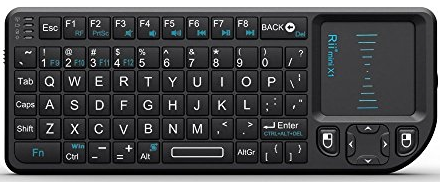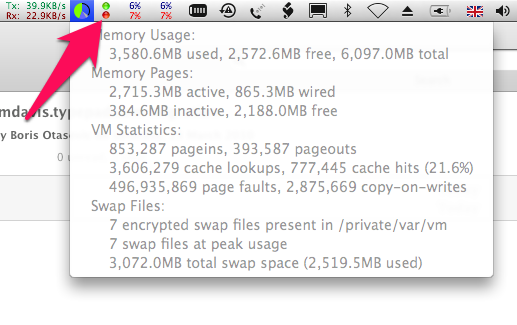I have not used Mate in a few years, and recently decided to install it on a Raspberry Pi because I was disappointed with the development progress of Raspbian, and the promising port of Bodhi Linux never shipped. I documented the install for my own personal reference -- but when that document ended up being larger than I expected, I decided to post it here in the hope that it will be productive. Some of these issues may also apply to Mate in general, not just the RPi distribution. If anyone can suggest workarounds for some of these things where appropriate, it is certainly welcome.
MISCELLANEOUS / GENERAL ISSUES
1. The setup application / installer offered to boot to desktop without login, but did not respect the selection and still prompts for login
2. Verbose boot does not work ('raspi-config' disable splash screen)
3. It appears that switching desktop panels disabled the 'icon zoom' feature in the dock. (Have to disable and re-enable). In any case, Plank does not make it clear that this feature requires the Marco adaptive compositor to be enabled in Mate Tweak.
4. At one point something turned off the compositor but Mate Tweak showed that it was still enabled. (You have to "disable" it before you can enable it.)
5. Plank dock icons dont bounce while apps are loading (like Mac)
6. Mate Tweak & 'show desktop' applet have the same icon (the two shortcuts on the panel look identical)
7. Power management - will not suspend
8. Etherape does not work (it runs fine on Raspbian)
9. Hardware sensors support does not work (psensors, panel applets, etc.)
10. Firmware update through 'Software Updater' fails. (At boot it also says 'firmware registration failed' before the GUI starts)
11. Lots of problems trying to use a Microsoft bluetooth mobile mouse 3600. It paired but the cursor did not move. (5 tries deleting and adding device from Bluetooth menu before it worked. Had no problems on Raspbian.)
12. When the mouse cursor changes to 'busy/working' it does not have a pointer but still acts like a pointer (you can click on a windows close button). Clicking should be disabled when the busy cursor is shown (like Mac), or a small pointer should be added to the busy cursor so you know what you are pointing at.
13. In Control Center / Internet & Network, there are no controls for Samba or Avahi (and no indication of which protocol versions are supported.)
14. Samba client services are broken (same on Raspbian). File manager sees the 'Windows network' but not the actual shares which are seen by Mac & Windows. ("Failed to retrieve share list from server: No such file or directory"). The Samba service is not even installed! When I enable it in the following manner, the errors are gone, and network shares appear in 'smbtree', but do NOT appear in the file manager:
"First of all, the Samba daemons smbd and nmbd must both be running for network browsing to work. '
smbtree' lists all the shares from machines on the network. So, off to/etc/sambaand wesudo pico smb.conf. The name resolve order uses hosts files first and broadcasts last and it is commented out! -Maybe we change that to:'name resolve order = bcast host'and then restart the servers with'service smbd restart'and'service nmbd restart'-"
"This is an awful mistake to make in an upgrade."
Well this "awful mistake" is apparently still being made. Meanwhile, even on Apple devices (which designed the Avahi protocol), Samba is now the default and just works out of the box.
15. My Samsung HDMI monitor was not detected (resulting in wrong resolution)
16. Screen resolution cannot be changed in Monitor Preferences
17. Some of the items in 'raspi-config' should be supported in the Control Center GUI (such as: Splash screen, Overscan, Memory split, Audio settings, Screen resolution, GL driver)
18. The window resize grab area is too small (and cannot be changed in Window Preferences.) It's a little bit frustrating sometimes.
19. Enabling software compositing in 'Control Center/Windows/Window Preferences' will disable Marco adaptive compositor (shadows) in 'Mate Tweak' -- but this change is not reflected in the Mate Tweak GUI, and Marco cannot be re-enabled through Window Preferences if you accidentally disable it there.
20. When you want to save changes to your custom panel in Mate Tweak, you must type the file name each time (there is no 'save' button, only 'save as').
21. It seems like Marco compositor is being disabled by the screensaver.
22. The screensaver continues to activate when disabled in ScreenSaver Preferences, and changes made to the default idle time in ScreenSaver Preferences are ineffective or not respected.
23. After sitting idle for about 16 hours, the ethernet connection dropped. When I click the connection gadget on the panel and select Ethernet Connection, an animated icon appears which indicates that it is searching for a WiFi connection. This fails with a pop-up alert that says "Disconnected: you are now offline." Disabling and re-enabling networking did not solve the problem, I had to reboot to restore connectivity. Since WiFi is disabled, and I had lots of problems with Bluetooth pairing, I am wondering if this might be related to the Bluetooth mouse, when it awakens from power saving mode and re-syncs.
24. When installing multiple applications through Software Boutique, if the installation of the first item fails due a bug in the installer or a connectivity issue, all of the other items are removed from the download queue, so you must return to the software catalogue and locate each item again.
25. When you have multiple updates queued for installation in Software Updater, and one or more of them fails, it just says "Package operation failed" instead of telling you which operations failed.
26. When downloading updates the word "Details" appears at the bottom of the progress window, along with a tiny button that expands the window.  In my opinion, this control is too small: just like the window borders, you must position the mouse cursor very carefully in order to hit the active zone. It is a nuisance when you must take extra care to slow down and move the mouse very precisely in order to operate controls. This tiny active zone is also going to be a problem for:
In my opinion, this control is too small: just like the window borders, you must position the mouse cursor very carefully in order to hit the active zone. It is a nuisance when you must take extra care to slow down and move the mouse very precisely in order to operate controls. This tiny active zone is also going to be a problem for:
- disabled people who use a joystick or head tracker to move the mouse
- wireless infrared keyboards with a built in joystick that controls the mouse cursor
- handheld remote controls with a built in air mouse (commonly used in lectures & presentations)
- handheld remote controls with a keyboard & touchpad

(Bear in mind that a lot of Raspberry users bought their machine to run LibreELEC, where the standard user interface is a wireless handheld remote control + air mouse, with a keyboard on the back. Considering the size of the potential user base for desktop Linux on the Raspberry platform, a modest effort to accomodate the most popular human interfaces on that platform is probably worthwhile.)
27. Chromium prompted me to "Unlock Login Keyring" when installing extensions. (This can apparently be cancelled with no ill effect.)
MEMORY RELATED ISSUES
1. If you are running a large application like Firefox and you try to install apps through a package manager, you can easily deplete all free virtual memory, and the system becomes unresponsive. In one case I let the system run for 10 hours and still could not regain control. (Android copes with this by suspending some applications until memory has been released, rather than trying to run them all simultaneously -- so the foreground app has priority, and its possible to close other apps to free up some RAM.)
2. The System Monitor applet does not show a disk activity graph for SD cards (which is really needed when the OS runs on a card)
3. Distros which are intended to run from an SD CARD should have a disk LED-style activity indicator for the panel (like MenuMeters on Mac), because you have to watch disk activity closely to make sure you dont task the read/write buffer too heavily and lose control of the system due to swap file thrashing.

4. The smallest panel applets require 15 - 20 megabytes each, so performance could be impacted by adding too many applets. I suggest warning the user about this -- or show the size of applets the in 'Add to panel' dialog.
5. Preloading web pages in the background on Chromium should absolutely be disabled by default, especially on low memory platforms (or any platform where the OS runs on an SD card.) And probably the same treatment should apply to the setting "Continue running background apps when Chromium is closed." Also remember that some people in rural areas have no wired connection, and all of the wireless services have a monthly data cap. In situations like this, you dont want to be preloading a lot of links that you will never actually click on.
6. I suggest one of the following changes to the ARM builds of Chromium:
- Bundle the
Tab Suspenderextension with Chromium on low memory platforms - Prompt the user to install a tab suspender, or recommend it in the description text on the software store profile.
Project: Investigate why the Chrome store does not offer "The Great Suspender" to Chromium users
